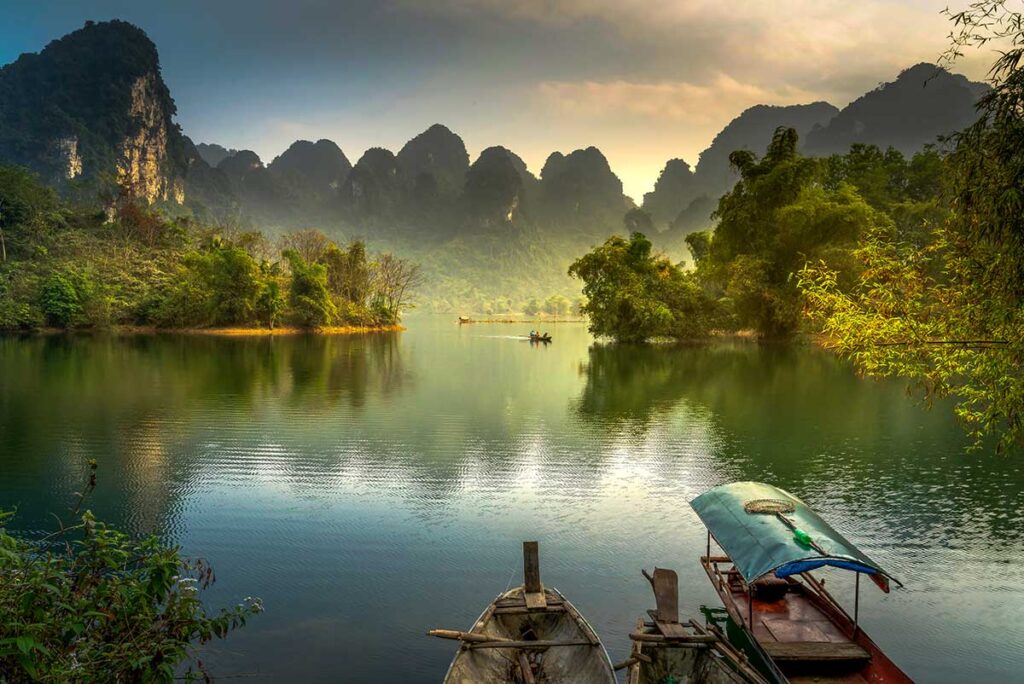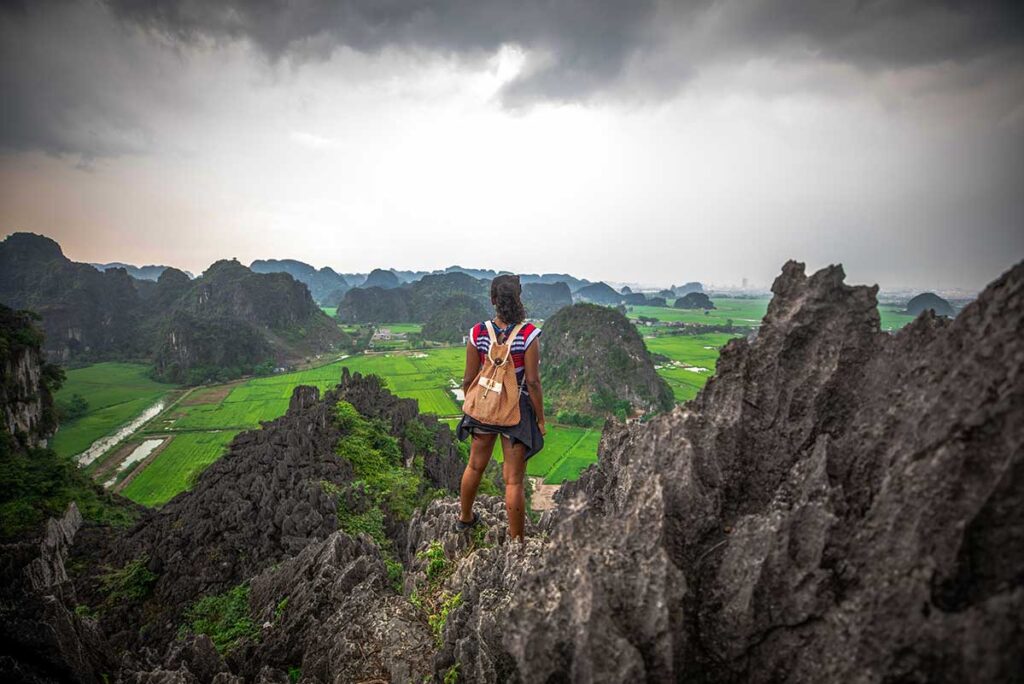About Tuyen Quang
Tuyen Quang is both a province and the name of its capital city, located in northern Vietnam. Surrounded by green mountains and flowing rivers, this destination is often overshadowed by its more famous northern neighbors. Despite this, Tuyen Quang holds a charm of its own, offering a peaceful escape and a taste of rural Vietnam.
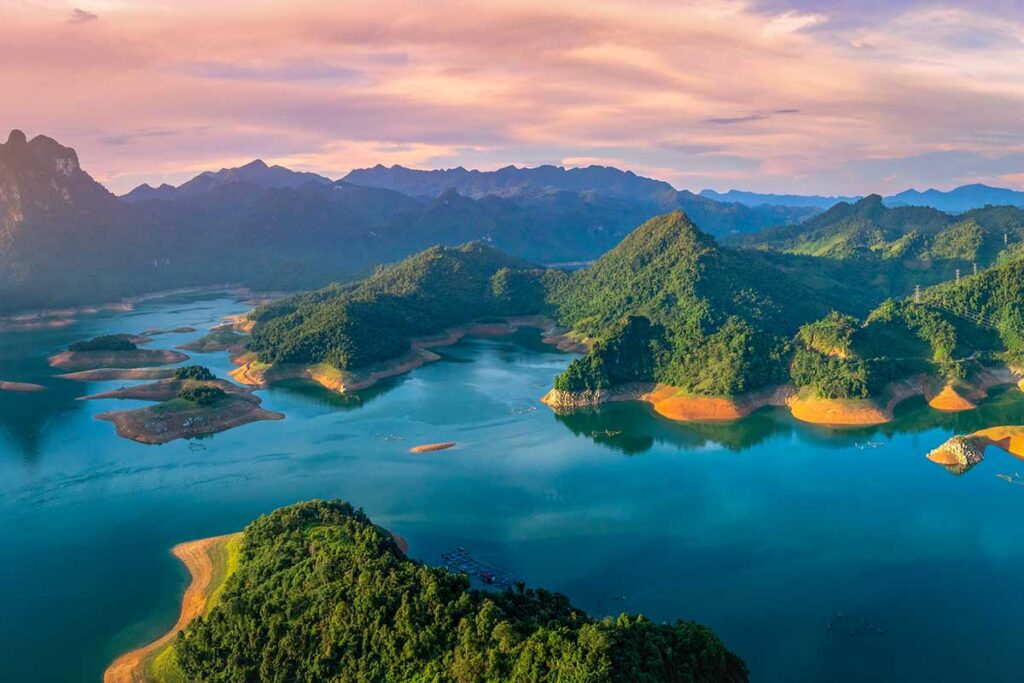
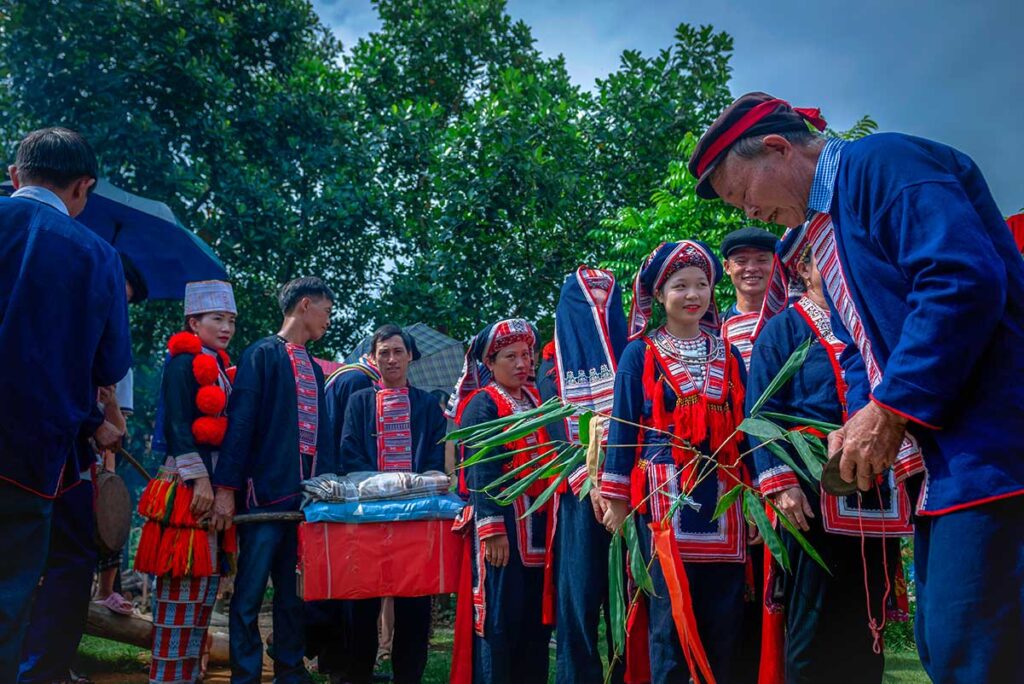
Historically, Tuyen Quang played a role during the resistance wars as a strategic base for revolutionary activities. Today, it is better known for its natural beauty, including hidden waterfalls and caves, as well as the famous Mid-Autumn Festival. With a mix of scenic and cultural things to do in Tuyen Quang, this destination appeals to travelers seeking tranquility and authenticity.
Is Tuyen Quang worth to visit?
Tuyen Quang is a beautiful area, but it doesn’t quite match the dramatic landscapes of other northern provinces like Lao Cai (Sapa), Ha Giang, or Cao Bang. However, its quieter atmosphere makes it a great choice for travelers looking for a more off-the-beaten-path experience.
Its location is also convenient, as Tuyen Quang lies on the route from Hanoi to Ha Giang, and with a small detour, it can also fit into an itinerary heading toward Sapa. For those who want a peaceful stop before visiting more touristy areas, Tuyen Quang offers a pleasant addition to your journey.
Best time to visit Tuyen Quang
Tuyen Quang is located in northern Vietnam, sharing a similar climate to neighboring destinations like Hanoi and Ha Giang. The region experiences a tropical monsoon climate with distinct dry and rainy seasons, as well as cooler winter months that are unique to northern Vietnam.
The best time to visit Tuyen Quang is during the dry season, which runs from October to April, with the ideal months being October and November when the weather is cool, and the landscapes are lush after the rainy season.
The rainy season, from May to September, brings frequent downpours that can make travel and outdoor exploration challenging. However, this time of year also offers vibrant green scenery, full rivers, but mostly stunning rice fields views (harvest around September). Winter months, particularly December to February, can get chilly, especially in the mornings and evenings, so pack accordingly if traveling during this time.
How to travel to Tuyen Quang
Tuyen Quang is conveniently located around 150 km (93 miles) north of Hanoi, making it a manageable destination for travelers using Vietnam’s capital as a base. While the city of Tuyen Quang serves as the gateway to the province, it’s primarily a transit point rather than a destination to linger. Here’s how you can travel to Tuyen Quang:
Flights to Tuyen Quang
There is no airport in Tuyen Quang. The nearest airport is Noi Bai International Airport in Hanoi, just a 2-hour drive away. This airport connects to all major cities in Vietnam.
For direct travel to Tuyen Quang from the airport, private transportation is the most practical option. Alternatively, you can head to Hanoi city center first and continue your journey by bus or car. Private transport from the airport to Tuyen Quang is even shorter than traveling from central Hanoi.
Bus options
Tuyen Quang is well-connected by bus, with frequent services departing from Hanoi. The journey takes around 4 hours, and ticket prices start at $7 (170,000 VND).
Sleeper buses are a popular choice in Vietnam, including for this route. These buses save daytime travel hours but might not be necessary for such a short journey. Sleeper buses also operate during the daytime, offering comfort with reclining seats.
For booking bus tickets in Vietnam, check out this guide: Bus travel in Vietnam.
Private car with driver
Hiring a private car with a driver is the most flexible and comfortable way to travel. While this option is more expensive, it allows you to stop for sightseeing along the way and explore the destination at your own pace.
This is an excellent choice for travelers planning a larger northern Vietnam itinerary, such as trips to Ha Giang or Sapa, where the same car can be used to explore the area.
Private transfer to Tuyen Quang
We can find you a reliable driver and help build a custom route with stops—whether you’re heading only to Tuyen Quang or connecting it with Ha Giang, Sapa, or other northern provinces.
Driving motorbike
For the adventurous traveler, driving a motorbike to Tuyen Quang is an option. Be prepared for Vietnam’s traffic conditions and consider your experience level before taking on this challenge.
Tuyen Quang is a convenient midway stop if you’re heading to Ha Giang, as driving directly from Hanoi to Ha Giang in one day can be exhausting. The journey offers scenic roads and a great introduction to the northern Vietnamese landscape.
Tuyen Quang Travel tips
How long to stay here?
Tuyen Quang can be explored in 1 to 2 days, which is enough to see its main highlights, such as cultural sites and natural landscapes. If you want to dive deeper into the region, such as exploring off-the-beaten-path villages or hiking trails, you might need an additional day. However, compared to nearby destinations like Ha Giang or Sapa, Tuyen Quang offers fewer attractions, so many travelers prefer a shorter stopover.
What to prepare
- Essentials: If you’re venturing into remote areas, bring all necessary items such as medications, snacks, and toiletries, as shops can be limited.
- Cash: Many local places do not accept cards, and ATMs can be sparse in rural areas. Withdraw enough cash in advance.
- Clothing: Prepare for the weather—light clothes for summer, and warmer layers for the cooler months, especially if you plan to visit the surrounding highlands.
- Footwear: Comfortable walking shoes are a must for exploring trails and natural areas.
Getting around Tuyen Quang
Taxi
Taxis are available in the city and can be used for short trips within town. For traveling to rural areas or exploring multiple sites, taxis are not ideal due to high costs and limited coverage.
Car with driver
A car with a driver is perfect for sightseeing across the region. You pay a fixed price for the day or itinerary, and the driver waits for you at each stop. While convenient, drivers often have limited English and may not understand what you find interesting unless explained clearly. They’re not guides, so don’t expect cultural insights.
Driving motorbike or scooter
Renting a motorbike or scooter is a fantastic way to explore the area. Rental services are often available at homestays, hotels, or rental shops. While police are unlikely to check your license, having a valid one is recommended. Only consider this option if you’re experienced in driving, as Tuyen Quang’s rural roads are not suited for beginners.
Where to go next
- Hanoi: Head south to Vietnam’s capital, just a 4-hour drive away.
- Ha Giang: Travel north to experience the stunning mountain passes and ethnic cultures of Ha Giang, Tuyen Quang’s most famous neighboring destination.
- Sapa: With a small detour, you can reach Sapa for its terraced rice fields and cooler climate.
Things to do in Tuyen Quang
Tuyen Quang is a province steeped in history and natural beauty, offering a wide range of activities for travelers looking to explore Vietnam’s cultural and scenic treasures. From historical landmarks to breathtaking landscapes, here are the top things to do in Tuyen Quang.
1. Na Hang Eco-Tourism Area
Often referred to as the “Ha Long Bay of the mountains,” the Na Hang Eco-Tourism Area is one of the best things to do in Tuyen Quang, offering a mesmerizing blend of limestone cliffs, pristine lakes, and lush forests. This natural wonder is a haven for adventure seekers, nature lovers, and anyone looking for tranquility.
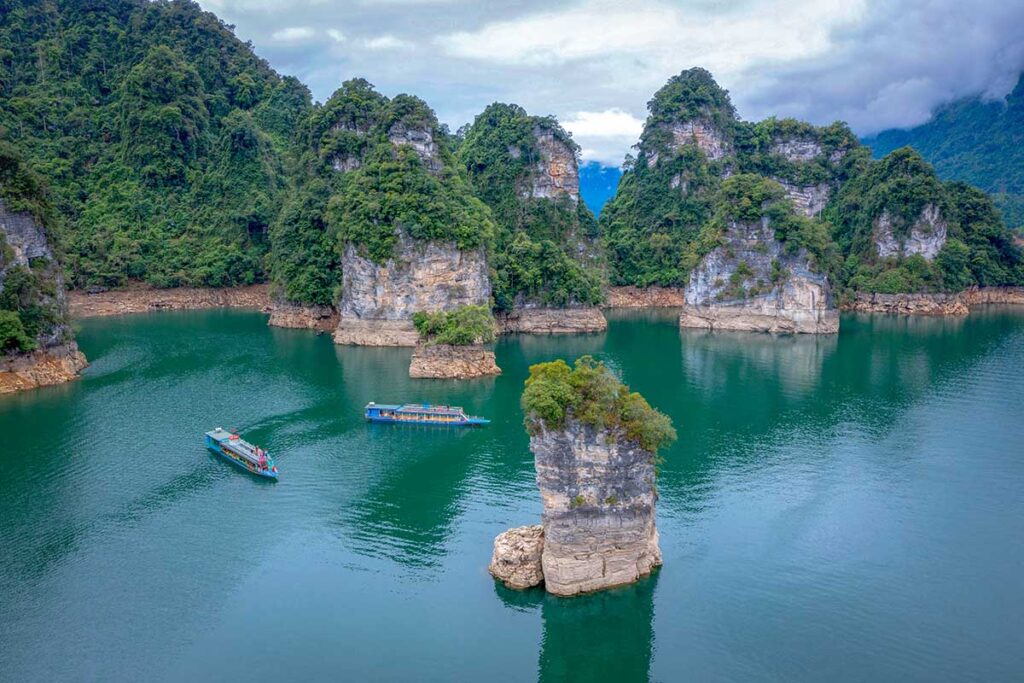
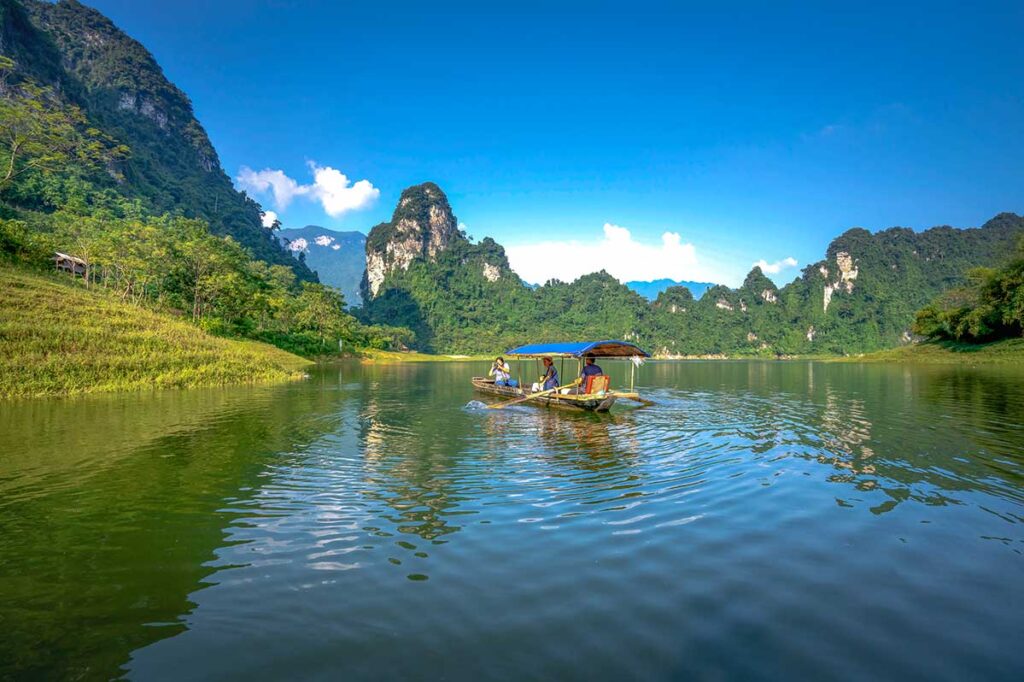
Na Hang Lake: Embark on a boat trip across this stunning lake, surrounded by dramatic limestone karsts and untouched wilderness. Along the way, visit picturesque spots such as Mo Waterfall and Khuoi Nhi Waterfall, known for their serene beauty and refreshing atmosphere.
Na Hang-Lam Binh Nature Reserve: Dive into the heart of nature with hikes through dense forests, home to unique wildlife and breathtaking landscapes.
Coc Vai Stone Pillar: A sacred natural rock formation rising 50 meters from the lakebed, where visitors often make wishes for good luck and prosperity.
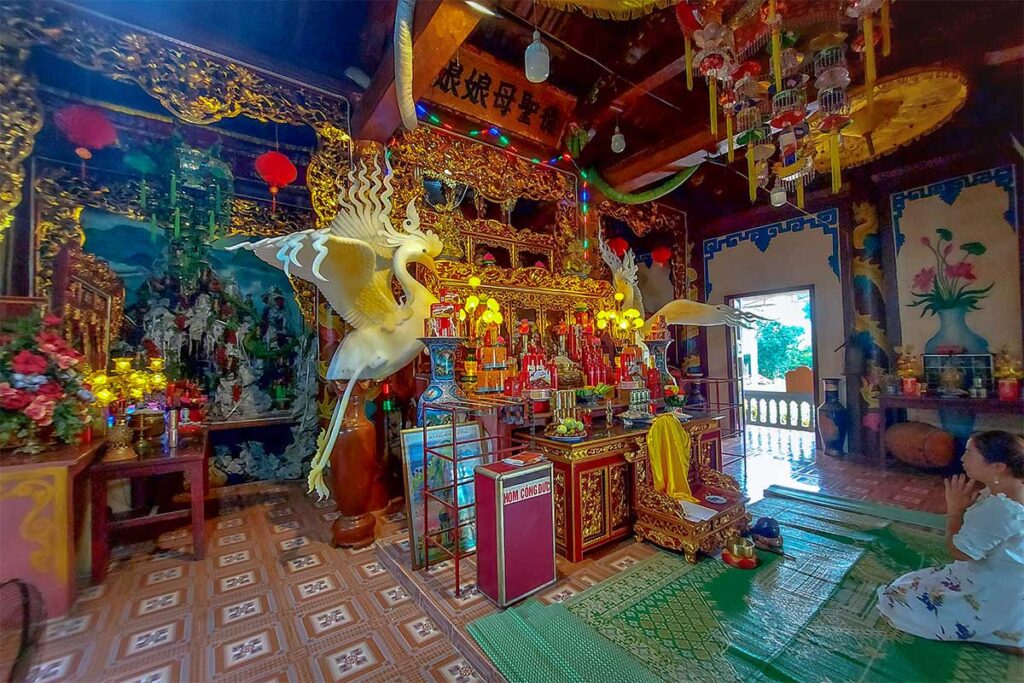
Pac Ta Temple: Located at the foot of Pac Ta Mountain, this historic temple commemorates the fiancée of General Tran Nhat Duat, a celebrated figure in Vietnamese history. Its spiritual and cultural significance makes it a meaningful stop during your visit.
2. Tan Trao Revolutionary Base
A visit to the Tan Trao Revolutionary Base offers a journey through one of the most significant chapters in Vietnam’s struggle for independence. This historic area is deeply connected to the revolutionary efforts led by President Ho Chi Minh and serves as a must-see destination for history enthusiasts. The site features several landmarks that played pivotal roles during Vietnam’s independence movement.
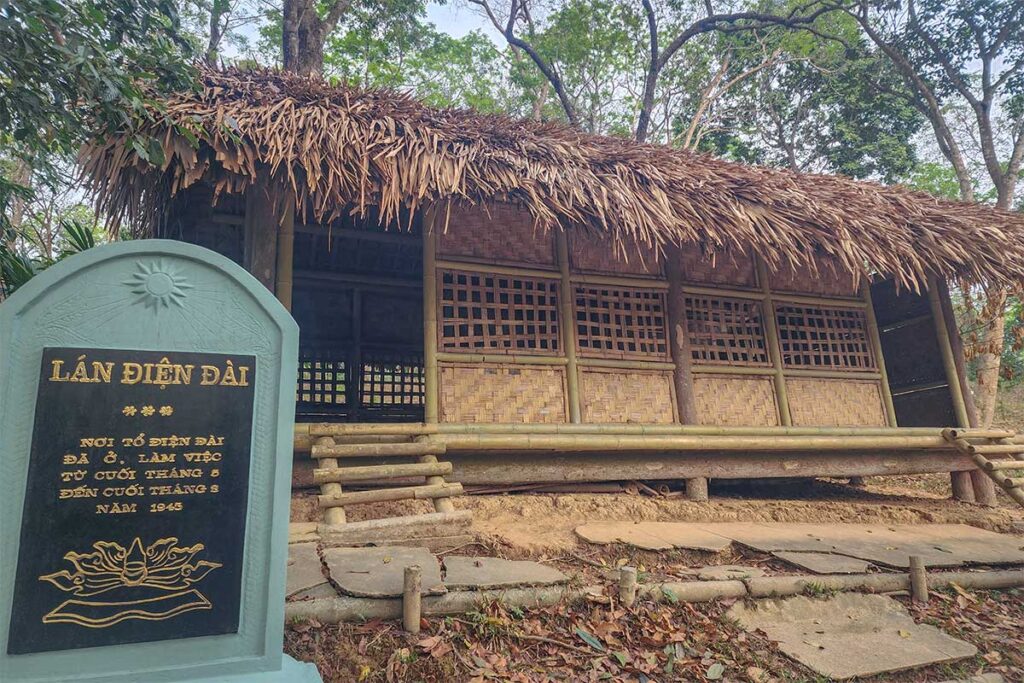
Na Lua Shack: This humble bamboo house was where President Ho Chi Minh lived and strategized the revolutionary plan leading up to Vietnam’s independence.
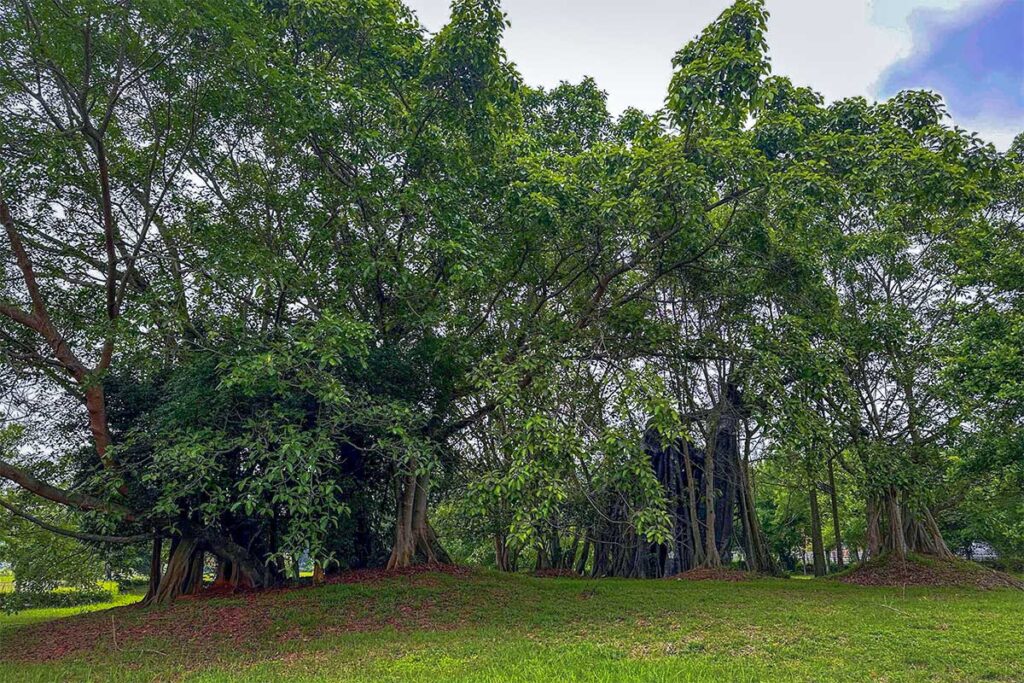
Tan Trao Banyan Tree: A symbolic location where the Vietnamese Liberation Army held a send-off ceremony before advancing toward Hanoi.
Tan Trao Communal House: The site where Vietnam’s national flag and anthem were officially adopted, marking a defining moment in the nation’s history.
Bong Cave: Nestled halfway up Bong Mountain, this cave served as President Ho Chi Minh’s residence and workplace during the resistance against the French. It was here that the 1950 Border Campaign, a major victory in Vietnam’s resistance, was directed, as well as the 2nd National Party Congress in 1951.
3. Mac Dynasty Citadel Gate & Remains
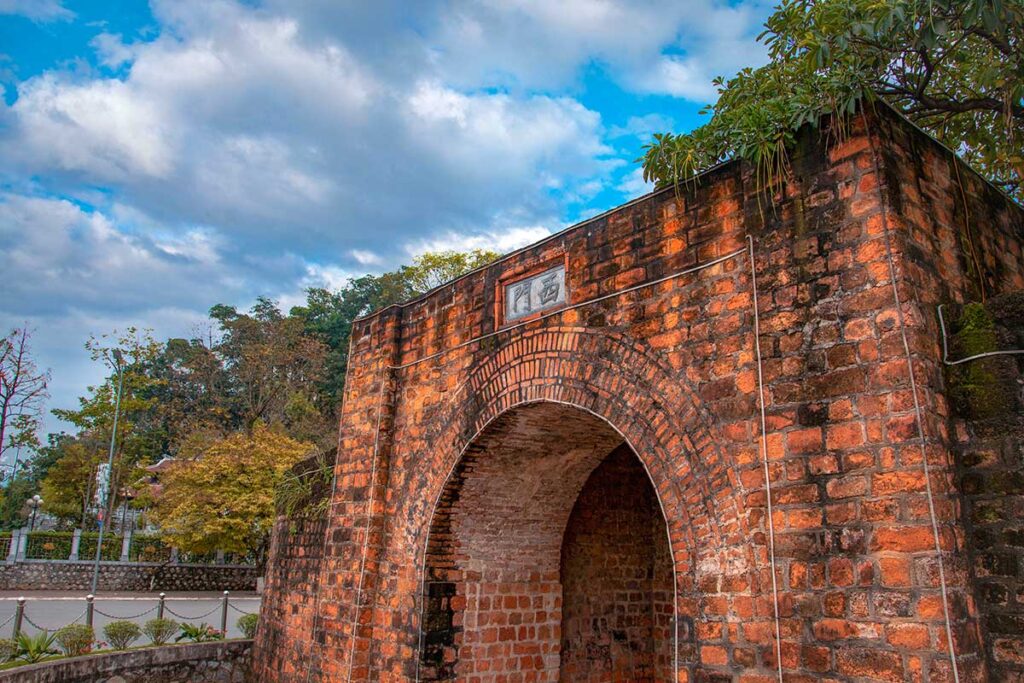
In the heart of Tuyên Quang City, you can find a few small remains of a Mạc Dynasty citadel built in 1552. While the original structure no longer exists in full, parts of the north and west gates and a 140-meter stretch of wall have survived. One of the gates is now located on a roundabout in the city center.
Although there isn’t much to see—just a moss-covered wall and small gate—it still represents an interesting piece of the city’s layered history, especially for those curious about Vietnam’s feudal past. It’s not a major attraction, but a quick photo stop if you’re passing by or exploring nearby.
4. Hong Thai Terraced Fields
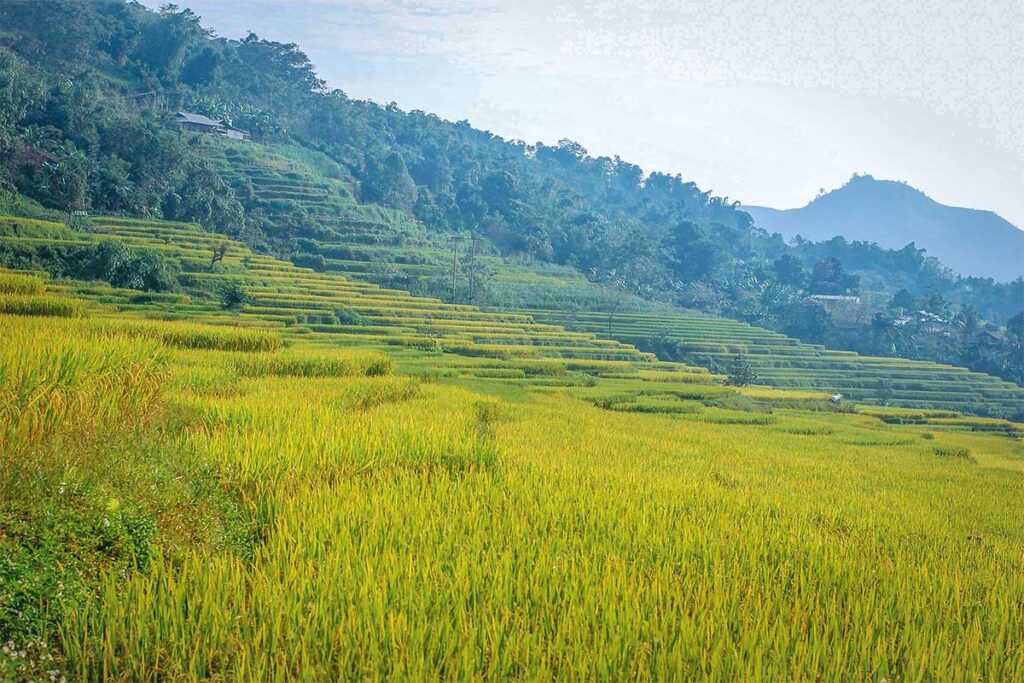
Nestled in Khau Trang village, the Hong Thai Terraced Fields are among the highest in Vietnam, sitting over 1,200 meters above sea level. These breathtaking fields transform into a sea of shimmering water during the planting season and golden waves of rice during the harvest season.
- Cultural immersion: Engage with the Dao Tien people, the local ethnic community, and participate in traditional activities like rice harvesting and planting.
- Best Time to Visit: September and October, when the fields are in their full golden glory.
5. Ethnic groups and cultural experiences
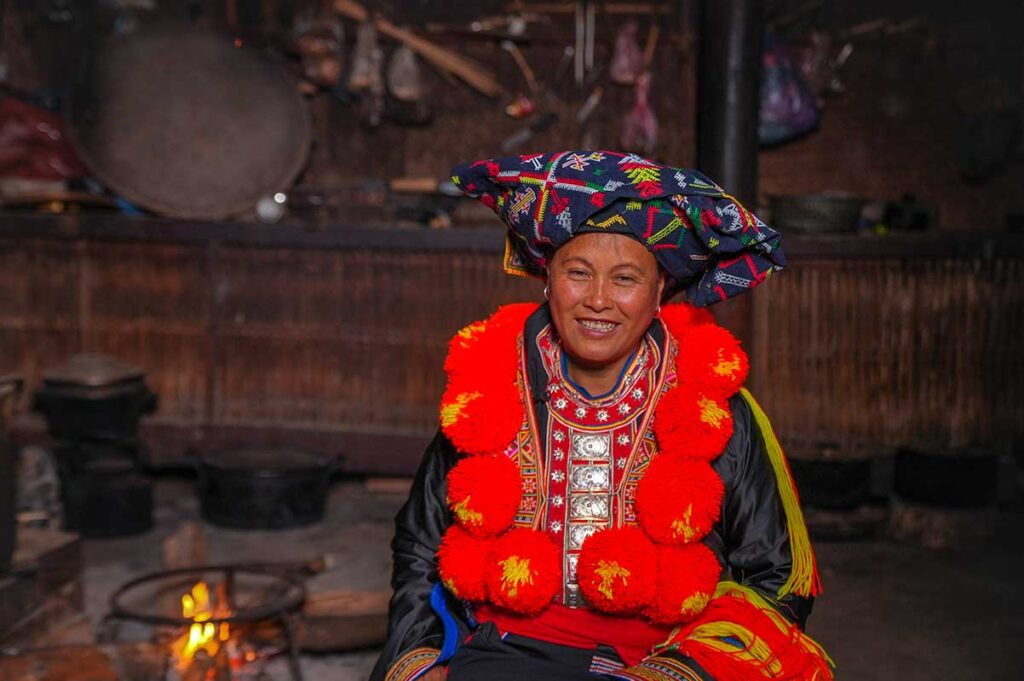
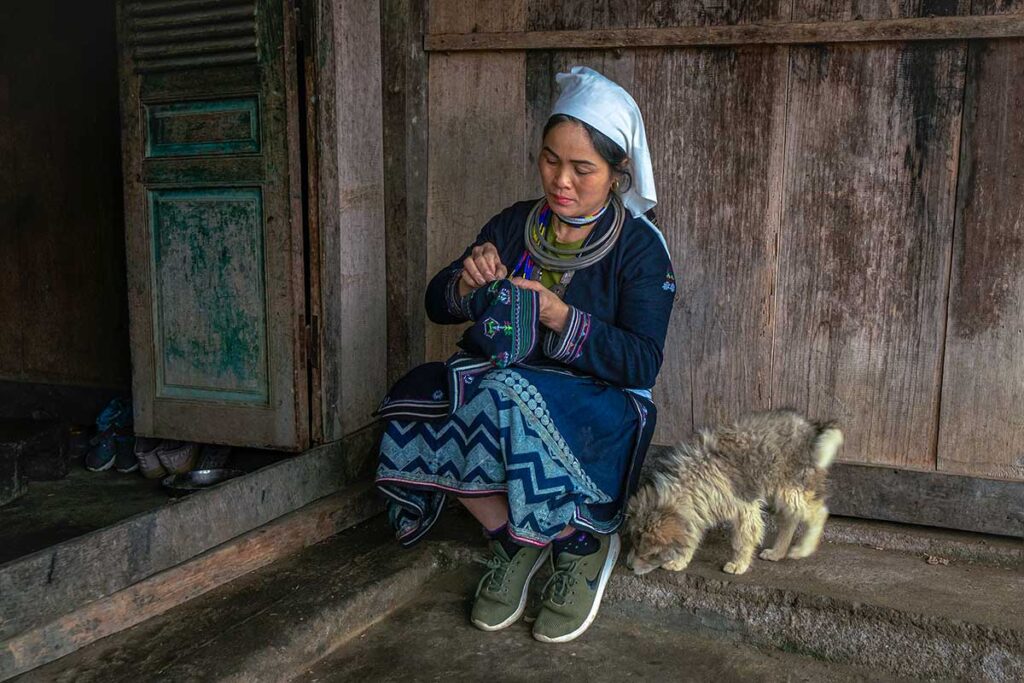
Tuyen Quang is a cultural melting pot, home to ethnic groups like the Red Dao, White Dao, and communities in Thuong Lam Commune. Each group offers a vibrant glimpse into their traditions, from colorful clothing to lively festivals that celebrate their heritage.
- Homestay experiences: Stay with local families to experience authentic hospitality and daily life.
- Cultural immersion: Learn about traditional crafts, such as embroidery and silver jewelry, and savor unique dishes that showcase regional flavors.
6. Song Long Cave
Nestled amidst the 99 mountains of Lam Ha commune, Song Long Cave is a geological marvel that captivates adventurers and nature enthusiasts. The cave’s massive entrance, framed by a unique stone formation known as the “stone pile reaching the sky,” sets the tone for an awe-inspiring journey inside.
Visitors can explore its expansive chambers, marvel at intricate rock formations, and enjoy breathtaking views of the surrounding landscape, making it a must-visit for those seeking adventure and natural beauty in Tuyen Quang.
7. Nam Me Waterfall
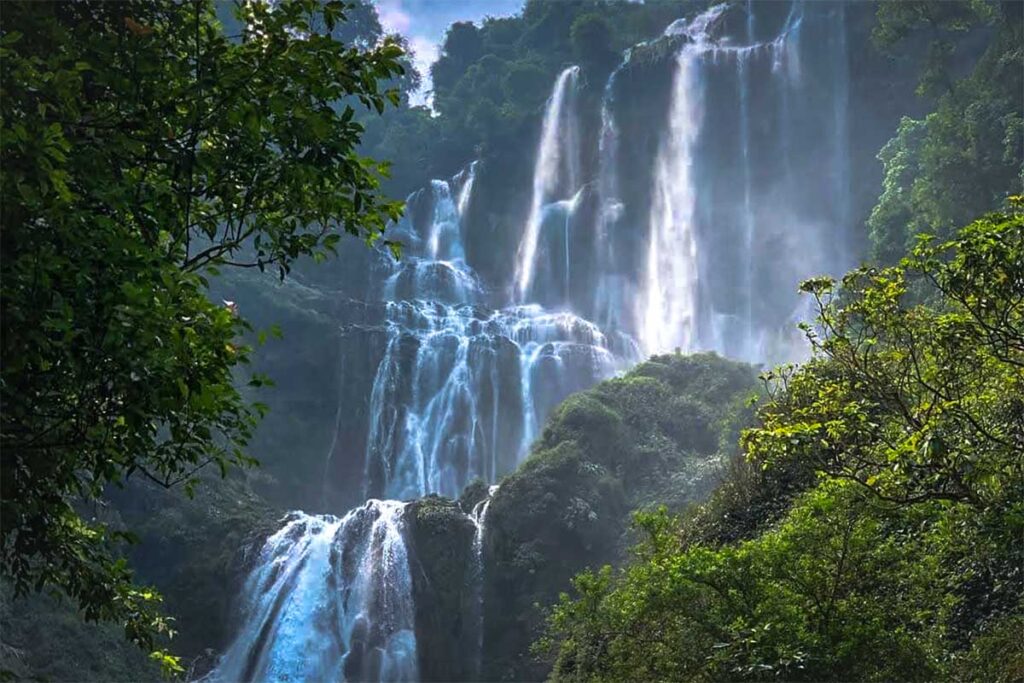
Located in the heart of the Na Hang-Lam Binh Nature Reserve, Nam Me Waterfall is a majestic cascade surrounded by lush tropical forest. Its multi-tiered streams and constant flow make it a picturesque destination, ideal for adventurous travelers and photographers looking to capture nature’s raw beauty.
Visitors can enjoy a serene hike through the verdant surroundings, listen to the calming roar of the falls, and explore the pristine natural habitat that surrounds this breathtaking spot.
8. Ban Ba Waterfall
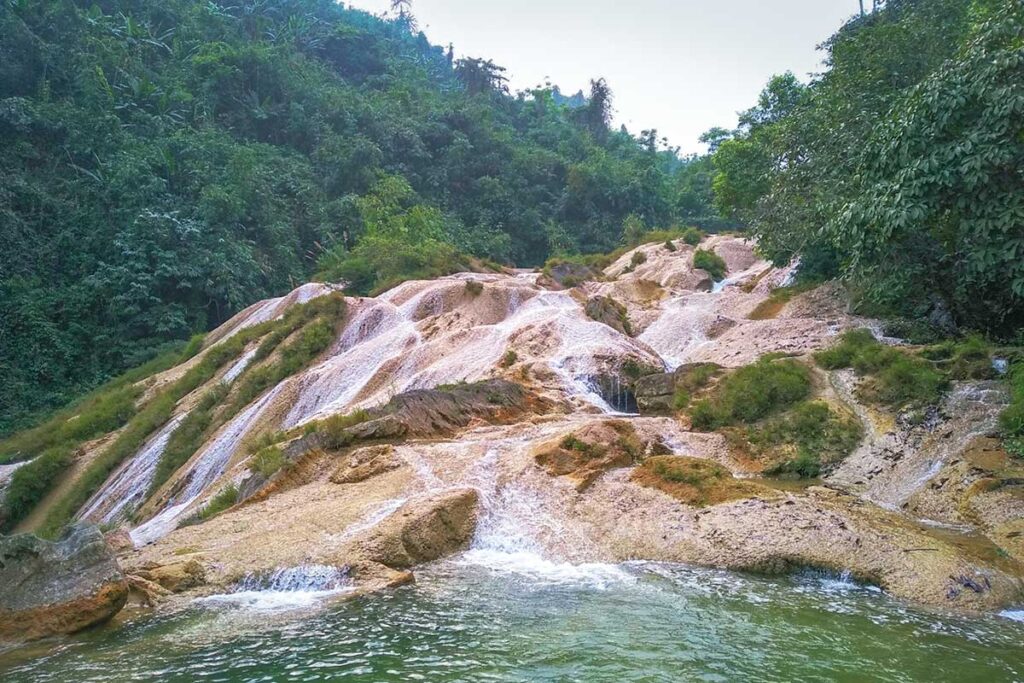
Situated on the slopes of Phieng Khang mountain in Trung Ha commune, Ban Ba Waterfall is a captivating chain of three interconnected waterfalls: Tat Cum, Tat Cao, and Tat Gio. The smaller cascades between them create tranquil pools, perfect for visitors seeking relaxation amidst the sounds of rushing water.
Explore the surrounding ancient forest, rich with towering trees, rare wood species, and twisting vines. The lush fields at the foot of the falls add to the area’s charm, offering picturesque views year-round. For a deeper cultural experience, stay in a stilt house with ethnic minorities and savor local delicacies like wild vegetables, grilled fish, and hill chicken for a truly immersive visit.
9. My Lam Mineral Spring
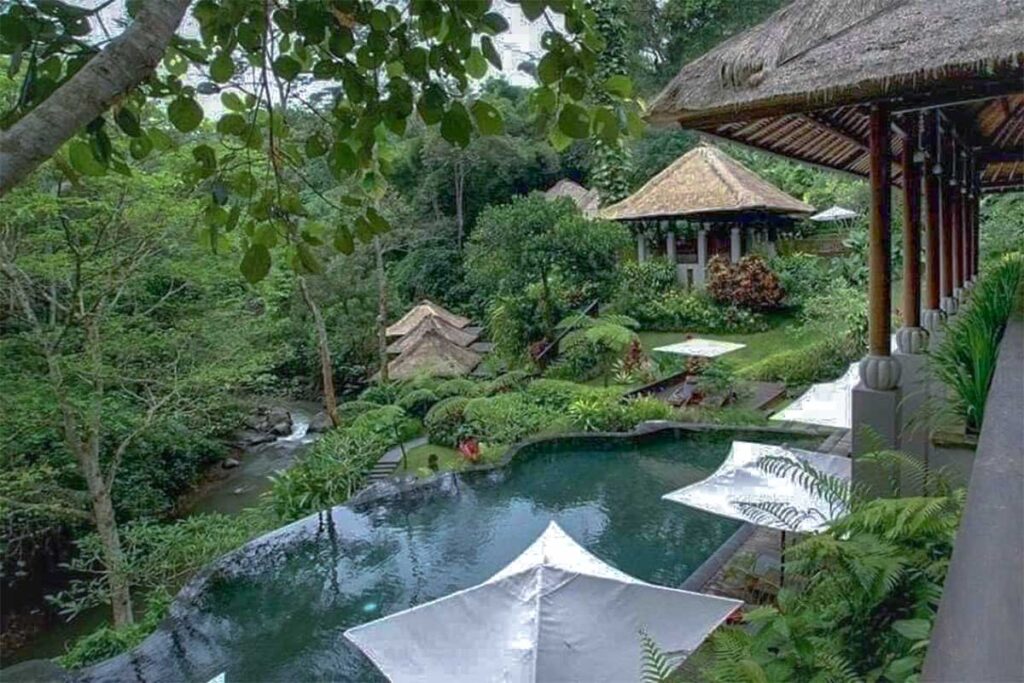
Discovered by French geologists in 1923, My Lam Mineral Spring is renowned for its naturally hot, mineral-rich waters with therapeutic benefits. Located just 12 km southwest of Tuyen Quang city, this peaceful retreat offers a perfect escape for relaxation and rejuvenation after a day of exploring the region.
You can soak in the hot springs, surrounded by serene landscapes, and enjoy the facilities, including accommodations and restaurants, making it an ideal stop for unwinding.
10. Nguyen Tat Thanh Square
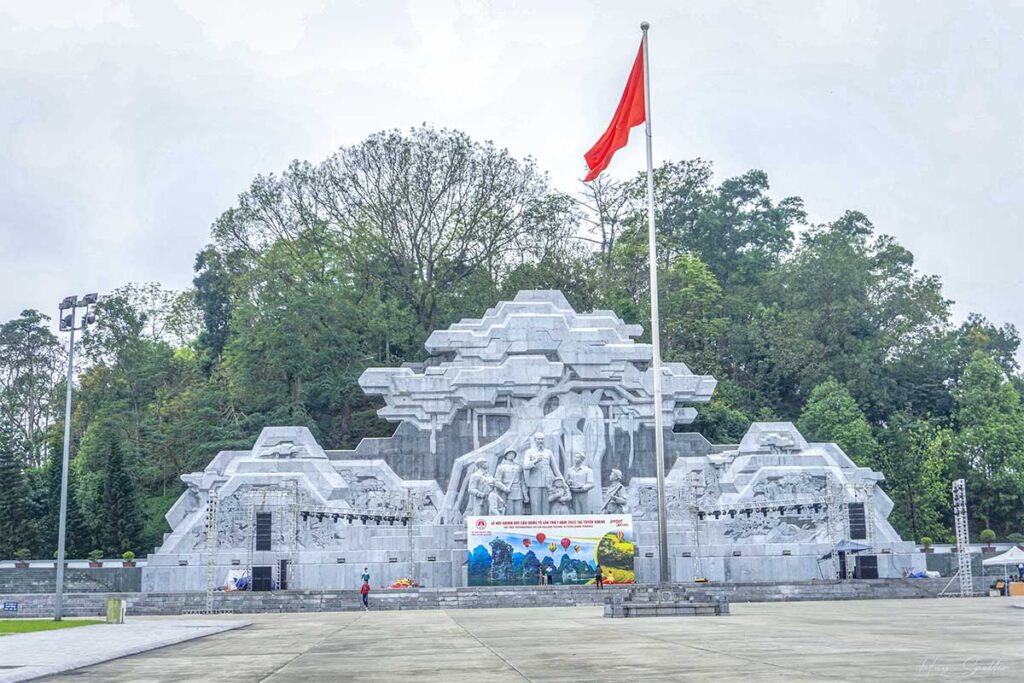
Situated in the heart of Tuyen Quang city, Nguyen Tat Thanh Square is a vibrant hub that celebrates the cultural and historical values of the region. Dominated by the striking monument of “Uncle Ho with the people of all ethnic groups in Tuyen Quang”, the square is a space for community events, festivals, and gatherings.
The square’s scenic location beside the Lo River, combined with its historical significance, makes it a pleasant spot for visitors to stroll, relax, and learn more about the region’s heritage.
Where to stay in Tuyen Quang
For an authentic experience, skip the city and stay in the countryside. While Tuyen Quang isn’t a major tourist hub, there are still accommodations available, mainly in the form of basic homestays and local hotels. The Na Hang Eco-Tourism Area is highly recommended for its serene environment and stunning natural beauty.
Despite its name, the “tourism area” doesn’t have a mass tourism vibe. It’s simply a designation by the Vietnamese government to support sustainable tourism development, such as enabling locals to establish homestays. While the accommodations in Na Hang are modest, they offer a unique opportunity to connect with local culture and enjoy the tranquility of the region.
Travel itinerary for Tuyen Quang
This two-day itinerary highlights the best things to do in Tuyen Quang, offering a mix of historical, cultural, and natural attractions.
Day 1
- Nguyen Tat Thanh Square: Begin your journey in Tuyen Quang city with a visit to this vibrant square, a cultural and historical hub.
- Mac Dynasty Citadel: Explore the remains of this 16th-century citadel and learn about its historical significance.
- My Lam Mineral Spring (optional): If you have time, detour to these relaxing hot springs, located southwest of the city.
- Tan Trao Revolutionary Base: Dive into Vietnam’s history with this significant site tied to the country’s independence movement.
- Pac Ta Temple: Scenic drive to Na Hang and stop by this spiritual and scenic temple.
Stay overnight in the Na Hang area.
Day 2
- Boat tour on Na Hang Lake: Explore the breathtaking “Ha Long Bay of the mountains,” including sights like Mo Waterfall and Coc Vai Stone Pillar.
- Visit waterfalls: Admire the cascading beauty of the region’s waterfalls, such as Khuoi Nhi or Nam Me.
- Explore ethnic villages and rice fields: Visit Khau Trang village for its picturesque terraced fields and to experience the culture of the ethnic Dao community.
